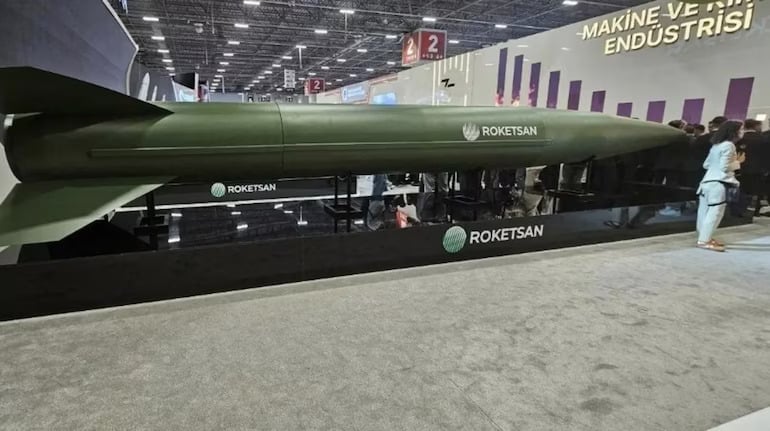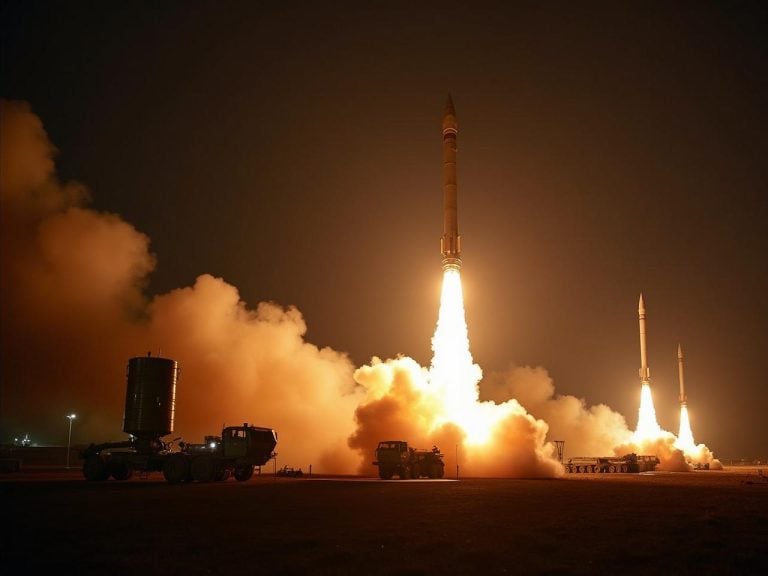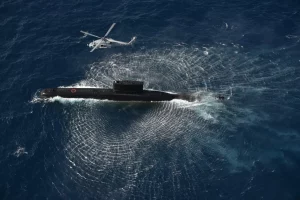Turkey has made a significant advancement in its defense capabilities with the introduction of the Tayfun Block-4 hypersonic missile, recognized as the most sophisticated indigenous weapon produced by the nation to date. Unveiled by the defense manufacturer Roketsan, this missile can achieve speeds exceeding Mach 5, marking a pivotal moment in Turkey’s ambition to bolster its technological and strategic influence within the region.
With this development, Turkey now joins an elite group of nations, including the United States, China, and Russia, who are at the forefront of the global hypersonic arms race. This positions Turkey as both an innovator and a mature player in the military-industrial landscape.
Evolution of the Tayfun Missile Program
The Tayfun missile program began in the early 2020s, emerging from Turkey’s strategic goal to decrease its reliance on foreign defense suppliers. Roketsan, which was established in 1988, led this initiative and initially benefitted from its collaboration with China’s CPMIEC on ballistic missile technology. The first test of the Tayfun missile occurred in October 2022, reporting a range of over 560 kilometers. Successive upgrades have culminated in the highly advanced Block-4 variant, featuring hypersonic glide capabilities that are challenging to intercept with existing defense systems.
Tayfun Block-4: Technical Specifications
The Tayfun Block-4 missile boasts impressive technical specifications:
- Speed: Range from Mach 5.5 to Mach 8
- Range: Between 800 to 1,000 kilometers
- Accuracy: 5-meter Circular Error Probable (CEP)
- Warhead: 750 kg conventional high explosive
- Guidance: Employs a combination of GPS, GLONASS, and INS
- Dimensions: Length ranges from 6.5 to 10 meters, with a diameter between 610 to 938 mm
- Launch Platform: Utilizes mobile transporter erector launchers
The missile’s exceptional speed, maneuverability, and an advanced anti-jamming guidance system enhance its capability for precision strikes, especially in contested or GPS-denied environments.
Strategic Importance of Hypersonic Weapons
Unlike traditional ballistic missiles, hypersonic weapons are distinguished by their ability to fly at lower altitudes and alter their trajectory mid-flight, making them exceptionally difficult to detect and intercept. This capability significantly enhances Turkey’s military strategy.
Turkey’s Position in the Global Arena
In the context of missile technology, Turkey’s Tayfun Block-4 has achieved operational status and emerges as a formidable contender against its global counterparts, like Russia’s Kinzhal and Zircon, and China’s DF-17.
Regional Implications and Military Strategy
From its launch platforms within Turkey, the Tayfun Block-4 missile can strike various targets, including:
- Major military sites in Greece, including Athens
- All areas of Cyprus
- Regions in Syria, Lebanon, and Israel
- Energy infrastructure across the Eastern Mediterranean
This capability reinforces Turkey’s "Mavi Vatan" (Blue Homeland) doctrine, enhancing its strategic posture in resource-rich maritime zones.
Challenges for NATO and International Response
Turkey’s missile capabilities have raised serious concerns within NATO, particularly as they pose explicit threats to Greece, another member state. This pursuit of military autonomy puts pressure on alliance dynamics.
Global Reaction:
- Greece and Cyprus: Greek officials have condemned Turkey’s missile ambitions, interpreting them as provocative moves that complicate their air defense strategies.
- European Union: The EU has criticized Turkey’s actions for escalating tensions in the Eastern Mediterranean.
- United States: While the U.S. has expressed support for Greece, it is also navigating the complex relationship with Turkey to maintain NATO solidarity.
The Rise of Roketsan in Turkey’s Defense Industry
Founded in 1988, Roketsan has become the leading force in Turkey’s missile and rocket development. The company now manages over 1,300 defense projects and exports to more than 180 nations. The advancements in local military production, which have surged from 20% in 2002 to over 70% in recent years, significantly reduce Turkey’s dependency on foreign suppliers.
Challenges Ahead
However, several challenges loom over the hypersonic program, including:
- The risk of triggering an arms race involving neighboring nations such as Greece, Egypt, and Israel
- Economic constraints, especially given Turkey’s current currency instability
- Technical hurdles associated with the extreme conditions of hypersonic flight, which demand advanced materials and systems
Future Prospects for Turkish Hypersonic Development
Looking ahead, Roketsan plans to focus on the development of longer-range systems, integrating technologies such as artificial intelligence and scramjet engines. The need for hypersonic missile defense systems may also become a priority as these technologies proliferate.
Conclusion
The introduction of the Tayfun Block-4 marks a watershed moment for Turkey’s military capabilities, illustrating its commitment to developing next-generation weapons. While this advancement enhances Turkey’s deterrence and maritime strategies, it also raises concerns regarding regional stability and the cohesion of NATO. As Turkey solidifies its role in the hypersonic landscape, it has the potential to influence future arms control and deterrent strategies on the international stage.



















